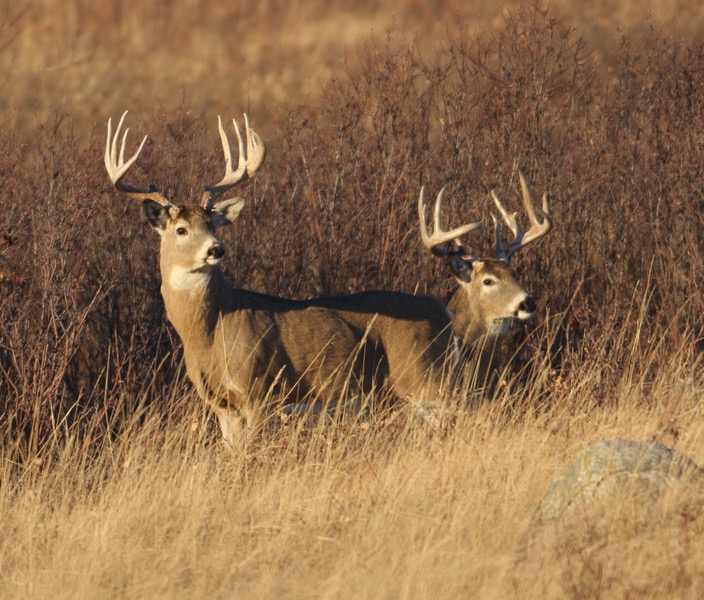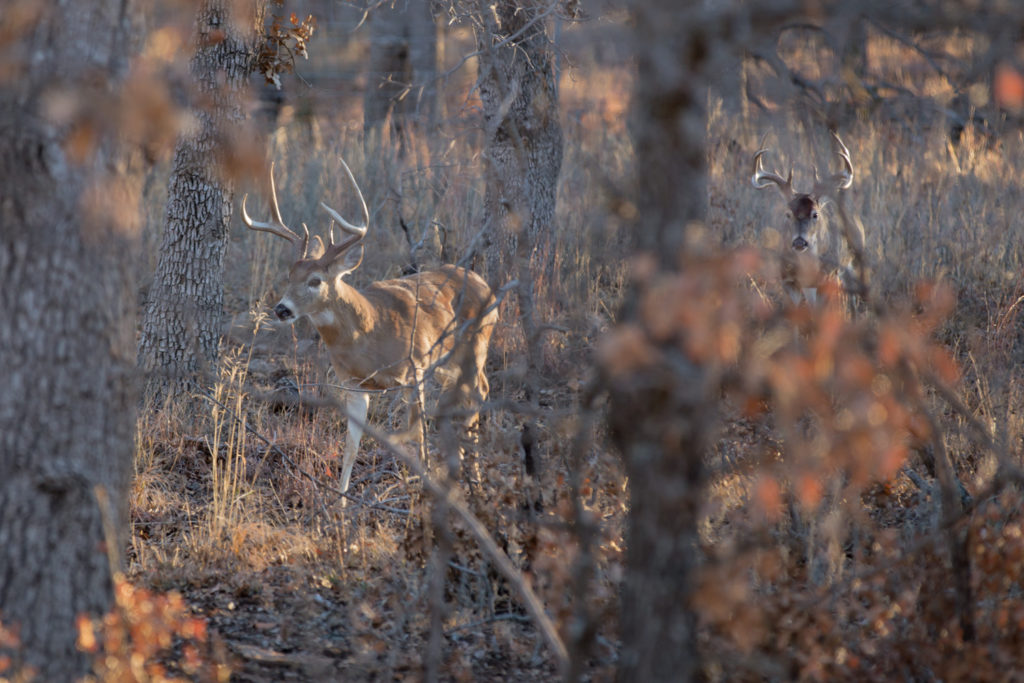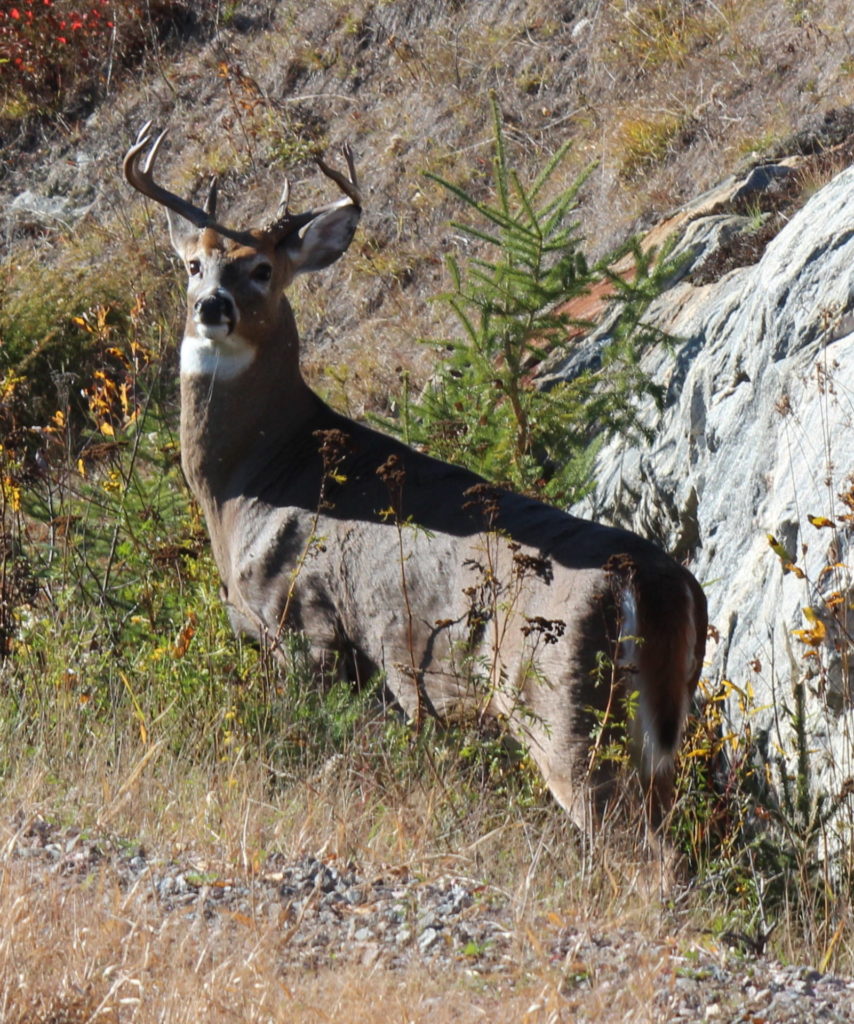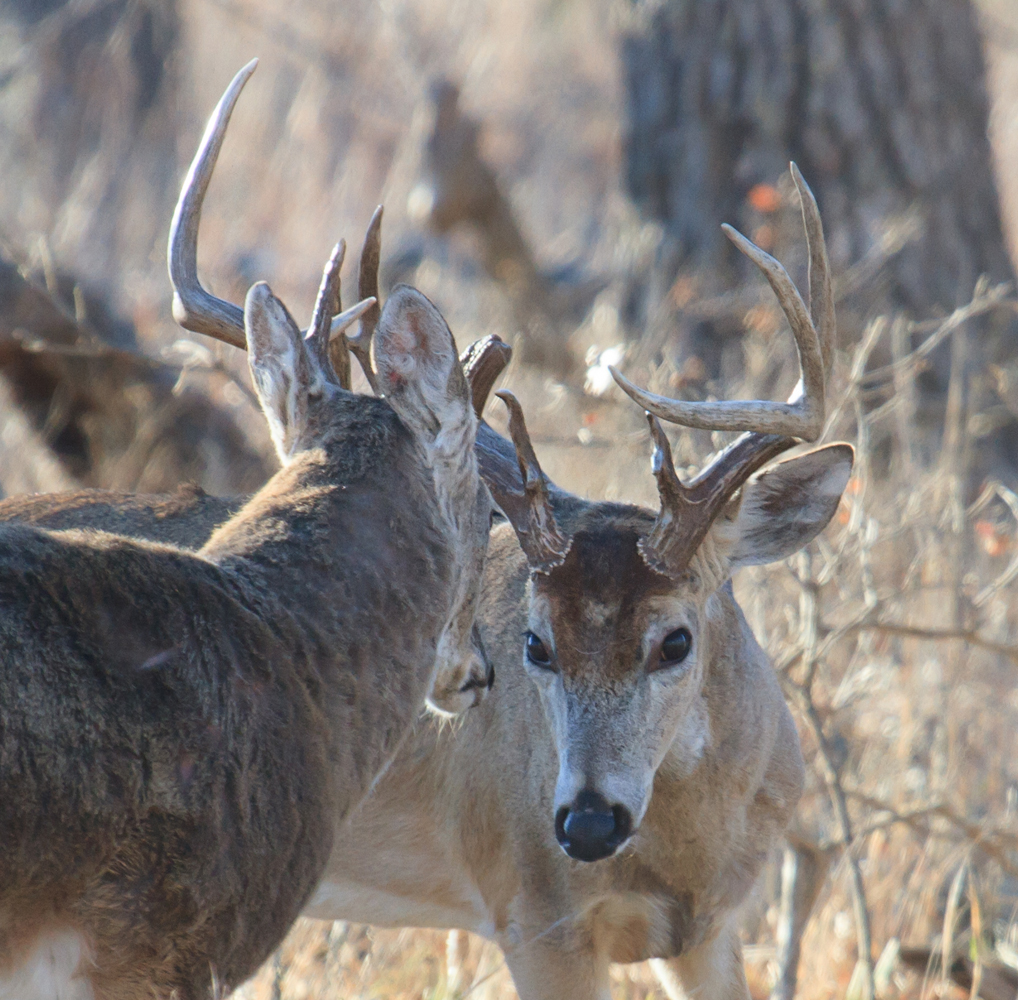UNDERSTANDING DEER VOCALIZATIONS AND RATTLING
All about grunts, snorts, bleats rattling and more
Advertisement
They don’t hoot like owls or howl like coyotes. They don’t even bugle like their cousins, the elk.
No, whitetails are comparatively quiet animals—you rarely hear them unless they blow an alarm snort. But they do commonly communicate using an array of vocalizations, typically subtle noises when they’re in close proximity to one another. And the tones vary depending on the age, sex and size of the deer, resulting in a broad assortment of sounds. Most hunting manufacturers offer instructional DVDs on how to properly mimic the various sounds-watch, learn and practise before heading afield if you’re new to deer calling. Make an unusual sound and you’re bound to spook the deer instead.
Advertisement
#1 GRUNTS
Bucks are most vocal during the rut, when one of their most common calls is the contact grunt. Used to announce their presence to other deer, it sounds like urrp. As bucks mature, the sound of this short, guttural grunt becomes deeper.
Advertisement
Hunting tips
- Buck grunts are one of the easiest deer sounds to mimic. While you can use one of the many superb, inexpensive and easy-to-use grunt tubes to make this call, with enough practice you can also make it using just your mouth.
- About half the time, I combine grunt calls with rattling or doe bleats. This adds more realism to the calling, making it even more enticing to bucks within hearing distance. That said, sometimes just a couple of grunts are all you need to lure a curious or testosterone-charged buck into range
- Avoid the temptation to overdo it-make just three or four grunts, then wait 30 minutes before repeating the sequence.
#2 TENDING GRUNTS
Bucks make long, drawn-out grunts when they’re in the company of a doe in heat. These are called tending grunts. As a mature buck approaches a doe, he’ll typically emit several short grunts followed by the louder extended tending grunt. While making this grunt, the buck will usually run at the doe, chasing her a short distance in hopes she’ll stand for breeding once she stops.
Hunting tip
- Learning how to properly imitate a tending grunt takes some practice, but it can be a very useful call to employ during the rut.
#3 SNORT-WHEEZE
A buck makes the snort-wheeze when he’s highly agitated—it’s the last sound he makes before attacking another male. The snort-wheeze is created when the buck quickly inhales and exhales several times, making a loud breathing sound, followed by one drawn-out inhale. This is a clear signal to an intruding buck to back off or prepare for an all-out fight.
Hunting tip
- This is one vocalization you can easily imitate without using an actual call. Simply clench your teeth together, frown (this draws your face tighter) and quickly breathe in and out several times through your mouth before taking an extended inhale as you straighten up your body.
#4 ALARM SNORT
This is the most common deer vocalization people typically hear, and the last one you want to hear if you’re a hunter—it means the deer has seen, heard or smelled you and you’re busted. A deer makes the alarm snort by forcing air through its nasal passages. Not unlike the sudden explosion of a ruffed grouse taking flight from underfoot, the sound of an alarm snort seems to stop time for a second or two.
Mature bucks rarely if ever make this sound, however-—they’re more the strong, silent type, preferring instead to simply vanish into the forest.
Hunting tips
- Deer don’t snort until at least two of their three primary senses—sight, smell and hearing—have been triggered. In fact, if a deer has heard you but can’t see or smell you, it will often move closer, trying to figure out whether you’re friend or foe.
- Since deer make an alarm snort when they sense danger, all other deer within hearing distance will also go on high alert. This is not always a deal-breaker when you’re hunting, however. While nearby deer will likely run for cover, it’s worth hanging in there and allowing the woods to settle down again. And because some deer snort more than others, almost to the point of crying wolf, not all the other deer in the area will necessarily buy into it.
- So, if you stay quiet and don’t move for about 30 minutes, things should settle down and you could still have a chance at a successful hunt.
#5 BLEATS
Made by does and fawns, bleats sound softer than grunts, but they’re similar in volume and length. Does often bleat when beckoning their fawns to follow them, but they’ll also bleat when asserting their dominance over other deer. Fawn bleats are noticeably higher pitched.
Hunting tip
- For a deadly calling combo, mix a couple of doe bleats in with a buck grunt or two. Believing another buck is pursuing a doe in heat, any nearby bucks may get jealous and come in to investigate.
#6 RATTLING
White-tailed bucks are constantly dialled in to the various noises in their surroundings. Along with vocalizations, the sound of clashing antlers will also pique their curiosity during the fall rut-and lure them in to have a look.
Hunting tips
- The first rattling sequence on any hunt should be relatively quiet, as there might be a buck nearby. A light tickle of the rattling antlers is sometimes all it takes to make a buck come storming right in, his hair bristling, within seconds. Or, he could approach more cautiously and take his time—you never know with whitetails.
- When hunting from late October through the November rut, you can add a little more drama to your calling and rattling sequences. I prefer to start with a couple of buck grunts and a doe bleat, then pause 10 to 15 seconds and follow up with aggressive antler smashing. If I’m in a ground blind, I’ll also stomp the ground to crunch leaves and snap twigs while I’m smashing and grinding the antlers. The idea here is to make it sound like an all-out fight between two 200-pound bucks-the sound of antlers alone doesn’t always convince nearby bucks that there’s an actual skirmish going on.
- Buck fights can carry on for quite some time, but I don’t want to be caught holding my rattling antlers and stomping around when a big, mature deer comes trotting in. So, after about a minute of this charade, I’ll set the antlers down, pick up my firearm and quickly and quietly sit down and blend into my surroundings.




